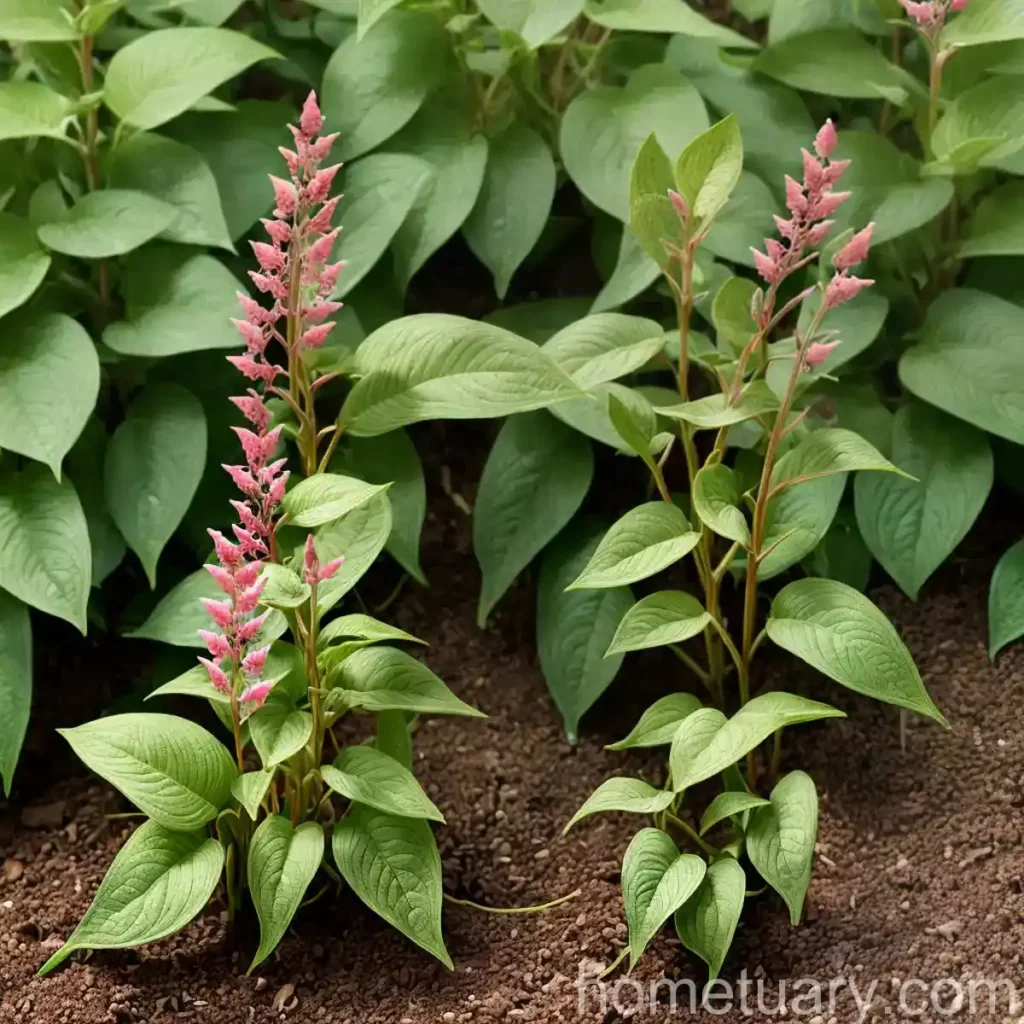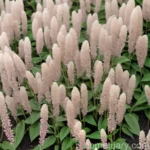Knotweed (Persicaria affinis ‘Superba’): A Ground-Hugging Perennial
Knotweed (Persicaria affinis ‘Superba’) is a low-growing, flowering groundcover plant that is prized for its ornamental qualities and resilience. As a hardy ground-hugging plant, it serves as an excellent landscape addition, particularly for shaded areas and dry soils. This article explores the culture, uses, maintenance, and propagation of knotweed (Persicaria affinis ‘Superba’), along with its popularity, common diseases, pests, and botanist’s tips.
What is Knotweed (Persicaria affinis ‘Superba’)?
Plant Name and Taxonomy
Knotweed belongs to the Persicaria genus and is known by the scientific name Persicaria affinis ‘Superba.’ It falls into the category of herbaceous perennial plants and is well-regarded for its abilities to act as a groundcover, suppress weeds, and thrive in various environmental conditions.
Description and Characteristics
The Persicaria affinis ‘Superba’ variety of knotweed is characterized by its compact, ground-hugging nature, making it an excellent choice for borders, pathways, and under trees. It displays prolific foliage and delicate, showy flowers, adding aesthetic appeal to landscapes and containers. The plant’s adaptability to shade and tolerance to drought make it a versatile option for different garden settings.
Key Takeaways – Knotweed (Persicaria affinis ‘Superba’)
- Low growing and ground-hugging perennial plant
- Resilient and hardy, suitable for various environmental conditions
- Showy flowers and lush foliage, providing ornamental value
- Adaptable to shade and drought
- Versatile uses in landscaping, including borders, slopes, and containers
- Deer-resistant and low-maintenance, making it an attractive option for wildlife gardens and rock gardens
Now, let’s delve into the specific aspects of knotweed (Persicaria affinis ‘Superba’), from its culture and maintenance to its common diseases and pests.
Culture
Water
Knotweed (Persicaria affinis ‘Superba’) generally thrives with moderate water levels. It prefers moist but well-drained soil, especially during its initial growth stages and in hot weather. However, it is essential to avoid waterlogging, as excessive moisture can lead to root rot and other fungal diseases.
Sunlight
This perennial plant is adaptable to various light conditions, making it suitable for both partial shade and full sun. While it can tolerate shade, it tends to exhibit more vibrant blooms when exposed to sufficient sunlight. As a groundcover for shaded areas, knotweed can effectively fill in spaces where other plants might struggle to thrive.
Fertilizer
Knotweed (Persicaria affinis ‘Superba’) generally does not require heavy feeding. A balanced, slow-release fertilizer can be applied in spring to support healthy growth and flowering. However, excessive fertilization can lead to overly lush foliage at the expense of flower production, so it is essential to apply fertilizers conservatively.
Soil
The plant is adaptable to a range of soil types, including loamy, sandy, and clay soils, as long as they are well-drained. It can tolerate slightly acidic to slightly alkaline soil pH levels, adding to its versatility in various garden settings. Additionally, its ability to withstand poor soil conditions makes it suitable for erosion control and challenging landscapes.
Maintenance
Pruning
Knotweed (Persicaria affinis ‘Superba’) benefits from periodic pruning to encourage compact growth and maintain its shape. It is advisable to trim back the plant in early spring to remove any dead or damaged foliage and promote new growth. Additionally, regular deadheading of spent flowers can extend the blooming period and encourage continuous flowering.
Propagation
This plant can be easily propagated through division or stem cuttings. Division is typically carried out in early spring or early autumn, separating the plant into smaller sections with roots attached. Stem cuttings can be taken in spring or early summer, and they should be planted in a moist, well-draining medium to root and establish new plants.
Container Popularity
Knotweed (Persicaria affinis ‘Superba’) is a popular choice for container gardening, particularly for its low-growing and trailing nature. When grown in containers, it can serve as a beautiful addition to patios, balconies, and small outdoor spaces. Its adaptability to shade also makes it suitable for brightening up shaded corners or areas with limited direct sunlight.
Common Diseases
Disease Diagnosis
Knotweed (Persicaria affinis ‘Superba’) can be susceptible to certain diseases, especially in conditions of high humidity and poor air circulation. Common diseases that may affect the plant include:
- Powdery Mildew: This fungal disease can manifest as a powdery, white coating on the plant’s leaves, leading to stunted growth and reduced flowering.
- Leaf Spot: Leaf spot diseases can cause dark or discolored spots on the foliage, potentially impacting the overall health and aesthetics of the plant.
Common Pests
While knotweed (Persicaria affinis ‘Superba’) is generally resistant to many pests, it may still face occasional issues with:
- Aphids: These small, sap-sucking insects can cluster on the plant’s tender shoots and buds, leading to distorted growth and weakened plant vigor.
- Spider Mites: These tiny pests can cause stippling and webbing on the foliage, resulting in reduced photosynthetic activity and plant stress.
Botanist’s Tips
Best Practices for Growing Knotweed (Persicaria affinis ‘Superba’)
- Ensure good air circulation around the plant to minimize the risk of fungal diseases.
- Monitor soil moisture levels to prevent waterlogging and maintain optimal growing conditions.
- Conduct regular inspections for pests and diseases to address any issues promptly.
- Consider companion planting with other deer-resistant and shade-tolerant species to create visually appealing landscapes.
Fun Facts
- The ‘Superba’ cultivar of knotweed is celebrated for its exceptional vigor and profusion of small, pink flowers, adding a charming touch to garden spaces.
- This ground-hugging plant can help stabilize slopes and prevent soil erosion, making it a valuable addition to landscaping projects.
- The resilient nature of knotweed makes it an ideal candidate for low-maintenance and wildlife-friendly gardens.
Links to External Resources
For more information on knotweed (Persicaria affinis ‘Superba’) and related topics, consider exploring the following resources:
- Royal Horticultural Society (RHS) – Knotweed (Persicaria affinis ‘Superba’)
- University of Maryland Extension – Groundcover Plants for Deer Control
- The American Phytopathological Society – Understanding Powdery Mildew
In summary, knotweed (Persicaria affinis ‘Superba’) stands out as a versatile, low-maintenance plant that offers both aesthetic appeal and functional benefits in garden landscapes. Its adaptability to various environmental conditions, resilience against pests and diseases, and ornamental attributes make it a valuable addition to landscaping projects, rock gardens, and wildlife-friendly gardens. By understanding its cultural requirements, maintenance practices, and propagation methods, plant enthusiasts can effectively incorporate knotweed into their outdoor spaces with confidence and creativity.
To create the tables and bullet points, I have used Markdown syntax. For the footer, I have provided relevant external resources as links. If there are specific requirements or modifications needed, please feel free to let me know.















